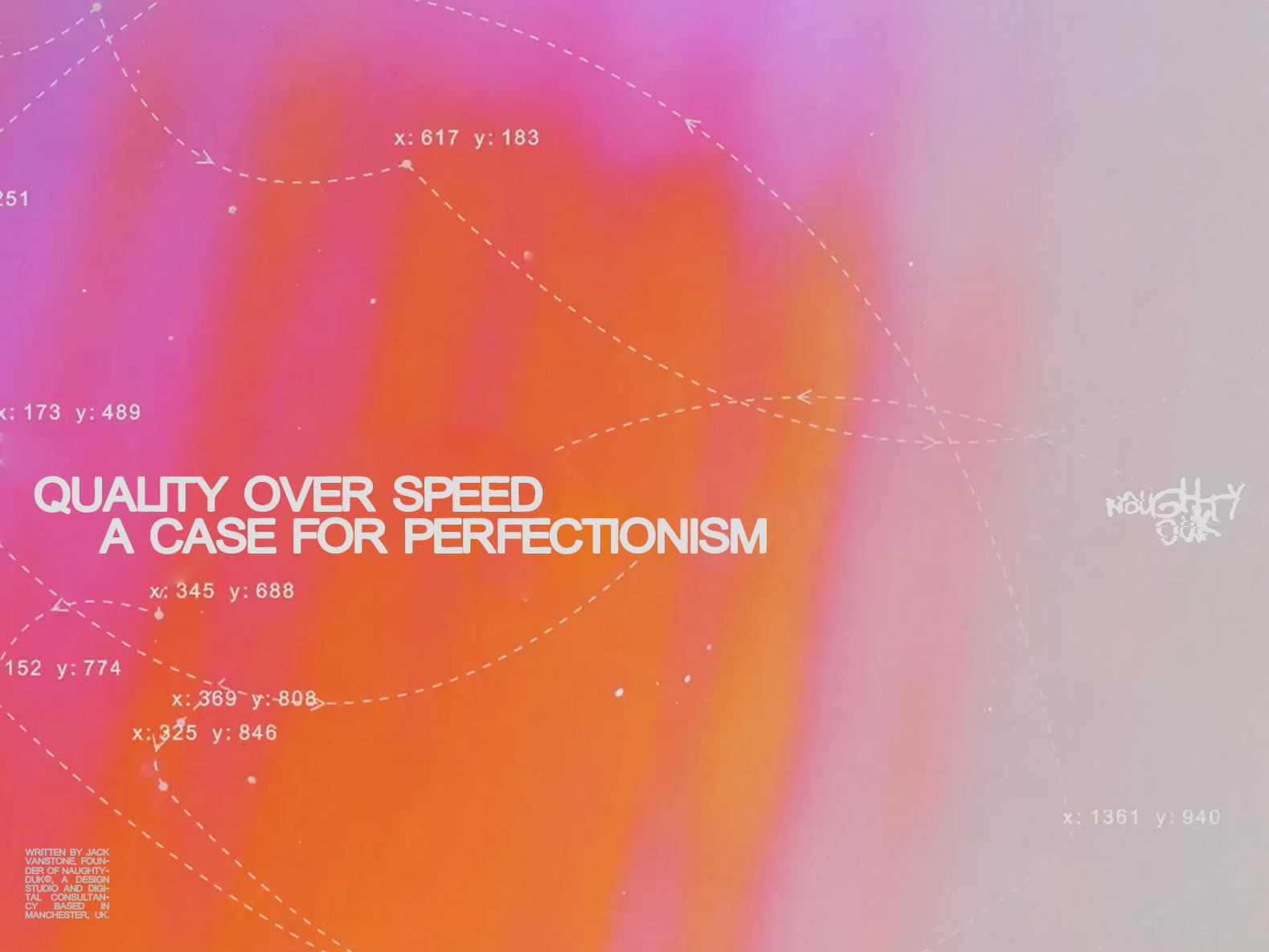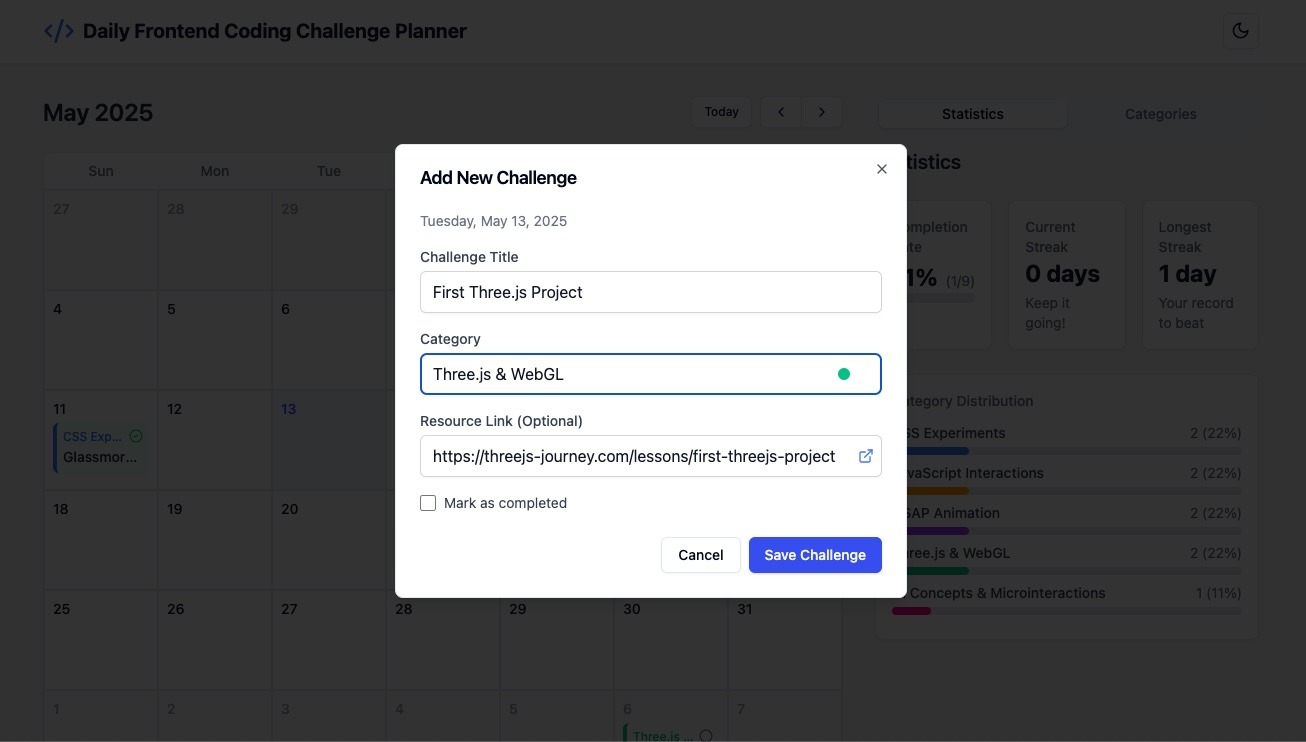The digital world is obsessed with speed.
“Move fast and break things” has graduated from a startup mantra to an industry-wide gospel. We’re told to ship now and ask questions later, to launch minimum viable products and iterate indefinitely. But in the race to be first, we risk forgetting what it means to be good. What if the relentless pursuit of ‘now’ comes with higher reputational consequences than we realise?
I’m Jack, the founder of NaughtyDuk©, a design studio and digital consultancy based in Manchester, UK. We’re the creative and technical engine for some of the biggest brands in entertainment, an industry where performance is non-negotiable. Our approach is contrarian to prevailing wisdom. We believe in quality and precision, not as luxuries, but as fundamental principles for achieving better results.
This isn’t slow or pedantic. It’s deliberate.
A Tale As Old As Time
I have worked for a lot of other businesses before. Contract, Industry, Agency, you name it… over the last 17 years I’ve seen the decisions that get made, many of them mistakes, from junior level through to senior leadership. Often I would find myself wondering, ‘is this how it has to be?’.
Businesses I worked for would cut corners everywhere, and I don’t mean slightly under-deliver to preserve margin, I mean a perpetual ethos of poor performance was not just accepted, but cultivated through indifference and a lack of accountability.
Motivated by this behaviour, I wanted to start something with integrity, something a bit more human, something where value is determined by quality-delivered, not just cash-extracted.
Enter NaughtyDuk©
I founded NaughtyDuk© in early 2024 with a simple mission: to create digital experiences that are not just functional, but also beautiful and performant, with proper architecture and cohesion across all touch points.
Although I am introverted by nature, and generally more interested in craft than networking – I’ve been fortunate enough to build partnerships with some of the largest companies and brands in the world.
The projects we work on are usually for brands with a substantial audience, which require a holistic approach to design and development. We are particularly proud of our work in the entertainment sector, which we recently decided was a logical niche for us.
Our Ethos
Our guiding philosophy is simple:
Designed with purpose, built to perform.
In the entertainment space, a digital touchpoint is more than just a website or an app, it’s a gateway to an experience. It has to handle crushing traffic spikes for ticket or merchandise drops, convey the energy of an event (usually using highly visual, large content formats like video/audio), be just as performant on mobile as it is on desktop, and function flawlessly under pressure.
In this context, creativity without a clear purpose is just noise. A beautiful design that collapses under load isn’t just a failure; it’s a broken promise to thousands of fans. This is why we are laser-focused on creativity and performance being complimentary forces, rather than adversaries.

To design with purpose is to understand that every choice must be anchored in strategy. It means we don’t just ask “what does it look like?” but “what is it for?”. A critical part of our ethos involves avoiding common industry pitfalls.
I don’t know how loud this needs to be for people to hear me, but you should never build platform first.
If you’re advising clients that they need a WordPress website because that’s the only tool you know, you’re doing something wrong. The same is true of any solution that you deliver.
There is a right way and 17 wrong ways to do everything.
This is why we build for performance by treating speed, stability, and scalability as core features, not afterthoughts. It’s about architecting systems that are as resilient as they are beautiful. Working with the correct tech stack on every project is important. The user experience is only as good as the infrastructure that supports it.
That said, experiential design is an incredibly important craft, and at the front edge of this are libraries like GSAP, Lenis, and of course WebGL/Three.js. Over the last few years, we’ve been increasing the amount of these features across our work, thankfully to much delight.
liquidGL
Recently we launched a library you might like to try called liquidGL, an attempt to bring Apple’s new Liquid Glass aesthetic to the web. It’s a lot trickier in the browser, and there are still some things to work out in BETA, but it’s available now on GitHub and of course, it’s open source.
particlesGL
In addition to liquidGL, we recently launched particlesGL, a library for creating truly unique particle effects in the browser, complete with 6 core demos and support for all media formats including 3D models, video, audio, images and text. Available on GitHub and free for personal use.
glitchGL
Following on from particlesGL is glitchGL, a library for creating pixelation, CRT and glitch effects in the browser. With more than 30 custom properties and a configurable global interaction system, which can be applied to multiple elements. Also available on GitHub and free for personal use.
We post mainly on LinkedIn, so if you’re interested in libraries like these, give us a follow so you don’t miss new releases and updates.
Selected Work
Teletech
At NaughtyDuk©, we don’t chase quick wins. With the team at Teletech – one of the largest Techno brands in the world – rather than rebranding white label solutions, we invested years into building a mutual understanding of what success looks like. This wasn’t efficient by traditional metrics, but it built a symbiotic partnership that was more fruitful later on.
The result is a suite of market-specific solutions that consistently deliver: web, game development, mobile app, and e-commerce; all made possible because we know the culture and the owners, not just the brief. This is why I would encourage other creatives to niche down into an industry they understand, and to see their clients as partners rather than targets – you might think this cynicism is rare but I can assure you it is not.
Quality relationships take time, but they’re the foundation of quality work.
OFFLIMITS
Sometimes the best choices you make on a project are the ones that no one sees.
For OFFLIMITS Festival, the UAE’s first open format music festival featuring Ed Sheeran, Kaiser Chiefs, OneRepublic, and more, one of the most critical aspects was the ability to serve large content formats performantly, at scale.
Whilst Webflow was the right platform for the core requirements, we decided to forgo several of Webflow’s own features, including their forms setup and asset handling. We opted to use Cloudflare R2 to serve videos and audio, giving us granular control over caching policies and delivery. One of many hidden changes which were invisible to users, but critical to performance. Taking time for proper decisions, even boring ones, is what separates experiences that deliver from those that merely look nice.
PRIMAL™
PRIMAL™ started as a sample pack library focused on raw high quality sounds. When they wanted to expand into audio plugins, we spent eighteen months developing custom audio plugins and architecting a comprehensive ecosystem from scratch, because comprehensive solutions create lasting value.
The result is something we’re particularly proud of, with automatic account creation, login, subscription creation, and license generation happening from a single click. This may sound simple on the surface, but it required months of careful planning and development across JUCE/C++, Stripe, Clerk, React, Cloudflare, and Mailchimp.
More information on this repositioning will be available late 2025.
The Integrated Pipeline
Our philosophy of Quality Over Speed only works if your team is structured to support it. Common approaches separate concerns like design and development. In large teams this is seen as somewhat essential, a project moves along a conveyor belt, handed off from one silo to the next.
This is understandable, but wrong. Bloat and bureaucracy are where vision gets diluted and potential goes to die. For this reason, at NaughtyDuk© we insist on handling the entire creative pipeline.
Having a holistic approach allows you to create deeply connected digital ecosystems.
When the same team that designs the brand identity also builds the mobile app and architects the backend, you get a level of coherence that simply isn’t possible otherwise. This leads to better outcomes: lower operational costs for our clients, less patchwork for us, higher conversion rates, and a superior customer experience that feels seamless and intentional.
Final Thoughts
Choosing craft over haste is not an indulgence, it’s a strategic decision we make every day.
It’s not that we are perfect, we’re not. It’s that we’d rather aim for perfection and miss, than fail to even try and settle for ‘good enough’. In a digital landscape saturated with forgettable experiences, perfectionism is what cuts through the noise.
It’s what turns a user into a fan and a brand into a legacy.
Our work has been fortunate enough to win awards, but the real validation comes from seeing our clients thrive on the back of the extra care and attention to detail that goes into a Quality Over Speed mindset. By building platforms that are purposeful, performant, and deeply integrated, we deliver lasting value.
The goal isn’t just to launch something, it’s to launch something right.





